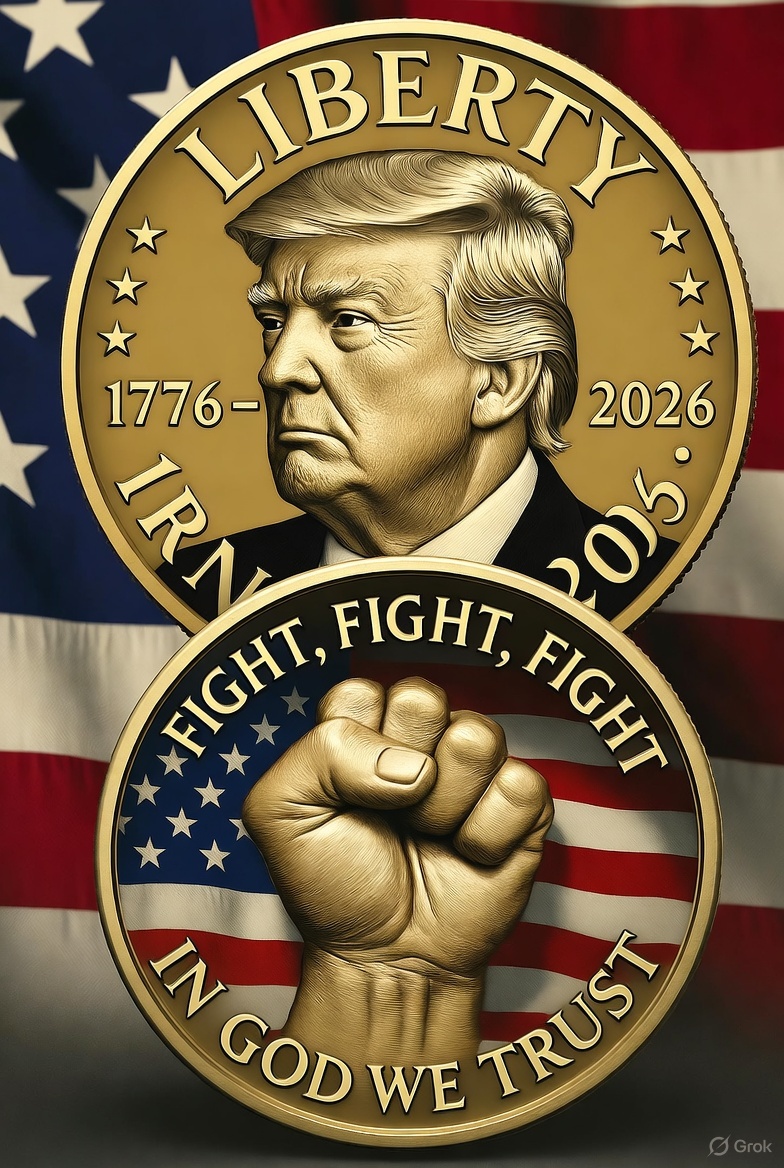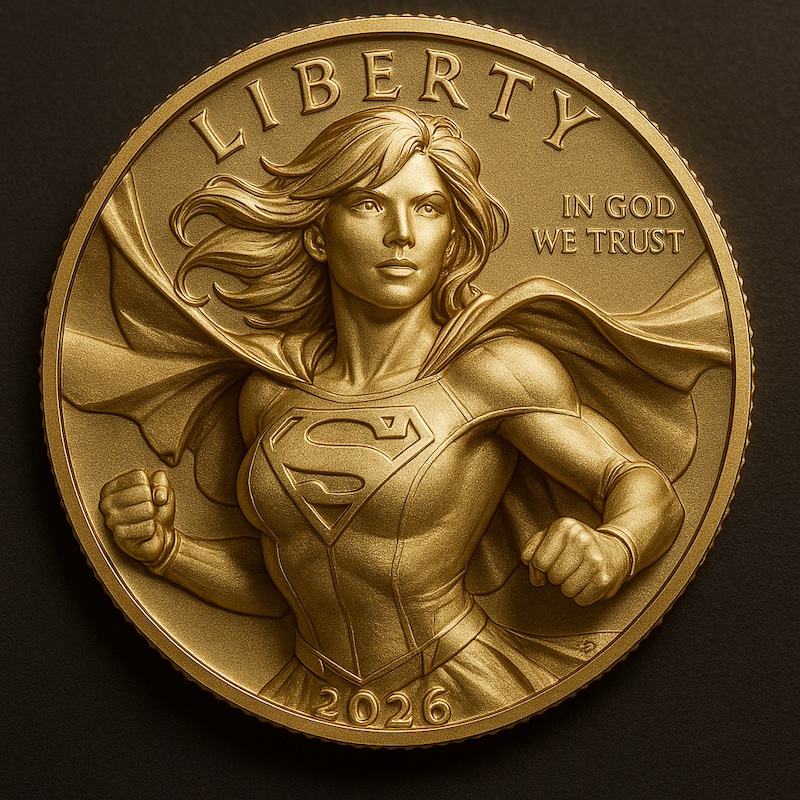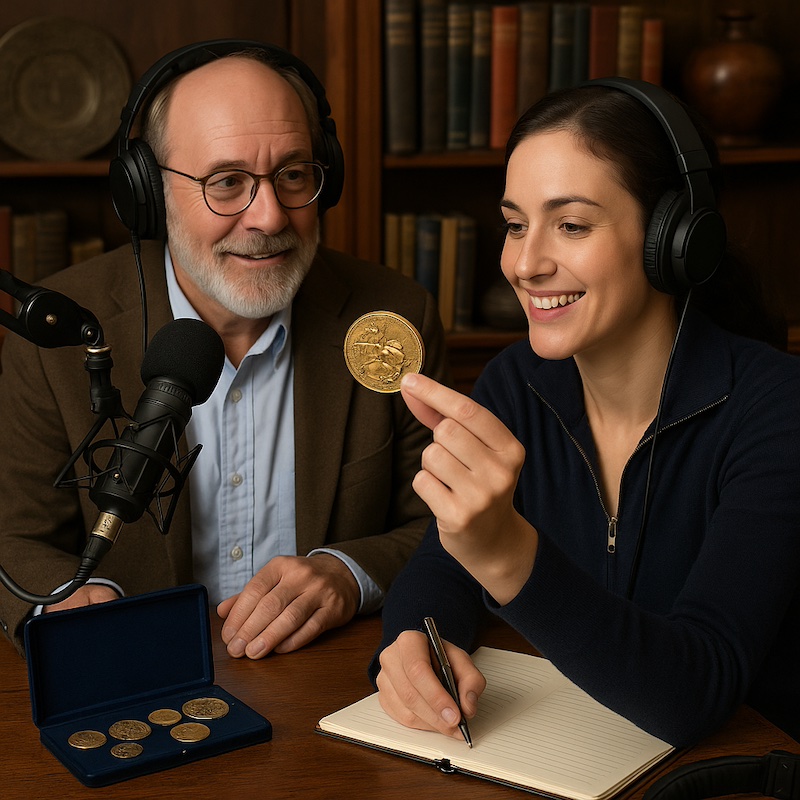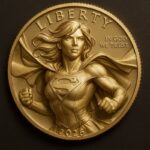A bold new commemorative coin proposal ignites debate, market curiosity, and collector anticipation ahead of the U.S. Semiquincentennial.
TL;DR Summary
The U.S. Treasury has unveiled draft designs for a proposed Trump 2026 $1 coin, commemorating America’s 250th anniversary of independence. The coin features President Donald J. Trump’s profile on the obverse and a raised clenched fist with “FIGHT, FIGHT, FIGHT” on the reverse—referencing his 2024 assassination attempt. While the design is only preliminary, it’s already generating intense discussion among collectors, investors, and the general public about the intersection of politics, history, and numismatics.
A New Chapter in Commemorative Coinage
The U.S. Semiquincentennial—the 250th anniversary of American independence in 2026—is one of the most anticipated celebrations in modern U.S. history. For the U.S. Mint and Treasury, it represents an opportunity to issue a series of coins and medals that reflect the nation’s heritage, resilience, and cultural milestones.
Among the early draft proposals revealed on October 3, 2025, one design in particular has captured public attention: the Trump 2026 $1 coin.
The proposed coin—still in a conceptual stage—features former President Donald J. Trump, the nation’s 45th president, whose survival of an assassination attempt in 2024 became a defining moment in contemporary American history.
“This is not just about politics—it’s about preserving pivotal moments in American history,” noted a senior numismatic analyst at CoinWeek. “Regardless of viewpoint, the Trump coin symbolizes a moment when the nation’s democratic process and resilience were tested.”
Design Details: Symbolism and Controversy
Obverse Design: The Presidential Profile
The obverse features:
- A right-facing profile of Donald J. Trump
- The inscriptions: “LIBERTY,” “1776–2026,” and “IN GOD WE TRUST”
- A high-relief engraving style that evokes classic presidential coinage
The dual-date “1776–2026” anchors the coin firmly within the Semiquincentennial narrative, connecting America’s revolutionary origins to its modern identity.
Reverse Design: A Powerful Statement
The reverse showcases:
- A raised clenched fist, symbolizing resilience and defiance
- The words “FIGHT, FIGHT, FIGHT” — Trump’s now-famous phrase after surviving an assassination attempt
- A waving American flag background
- Standard inscriptions: “UNITED STATES OF AMERICA” and “E PLURIBUS UNUM”
While supporters view the design as patriotic, critics argue it risks politicizing the nation’s commemorative coinage.
“Commemorative coins should unify, not divide,” observed a past member of the Citizens Coinage Advisory Committee (CCAC). “While the artistry is striking, the symbolism must be considered carefully to ensure it aligns with the broader purpose of national reflection.”
Historical Context: Presidential Imagery in U.S. Coinage
Depicting presidents on U.S. coins is not new—but it is always significant. From Abraham Lincoln’s penny (1909) to John F. Kennedy’s half dollar (1964), presidential portraits have served as both tributes and historical markers.
| President | Coin | Year Introduced | Significance |
|---|---|---|---|
| Abraham Lincoln | Cent | 1909 | First president on circulating U.S. coin |
| Thomas Jefferson | Nickel | 1938 | Coincided with Jefferson’s Monticello legacy |
| Franklin D. Roosevelt | Dime | 1946 | Honored his leadership through WWII |
| John F. Kennedy | Half Dollar | 1964 | Memorial issue following assassination |
| Dwight D. Eisenhower | Dollar | 1971 | First large dollar coin since Peace Dollar |
| Donald J. Trump (proposed) | Dollar | 2026 | Marks Semiquincentennial and historic survival |
If approved, the Trump 2026 $1 coin would be the first U.S. coin to feature a modern president not yet deceased, a break from the long-standing Mint tradition that portraits be issued posthumously—a move that would surely spark legislative debate and collector interest alike.
The Legislative and Minting Process
Before any new coin becomes reality, it must navigate a multi-stage process involving:
- Legislation — Congress must authorize new commemorative coins or series.
- Design Proposals — The U.S. Mint and Treasury Department work with artists and advisory bodies such as the CCAC and the Commission of Fine Arts (CFA).
- Approval — Final designs are approved by the Treasury Secretary.
- Minting and Distribution — The U.S. Mint produces limited runs for circulation, collectors, or investment.
As of October 2025, the Trump 2026 $1 coin remains a draft concept, pending potential legislative introduction or authorization under a broader Semiquincentennial coin program.
Numismatic and Market Implications
1. Collector Appeal and Investment Potential
If approved, the Trump 2026 $1 coin could become one of the most sought-after modern commemoratives of the decade—due to both its subject and controversy.
- Limited mintage would drive demand among collectors.
- Political symbolism could appeal to both supporters and detractors as a collectible artifact.
- Historical connection to the Semiquincentennial would ensure long-term cultural relevance.
“Controversy often fuels collectibility,” noted Heritage Auctions numismatist David Mayfield. “Coins that capture defining moments—positive or divisive—tend to appreciate over time.”
2. Potential Price Outlook
While speculative, early commemorative issues with political resonance have historically performed well:
| Coin | Issue Year | Initial Price | Avg. Market Value (2025) |
|---|---|---|---|
| 1964 Kennedy Half Dollar | 1964 | $0.50 | $12 (uncirculated) |
| 1976 Bicentennial Quarter | 1976 | $0.25 | $10–$50 (proof sets) |
| 2026 Trump $1 Coin (projected) | 2026 | TBD | Unknown, high potential |
If released in both proof and uncirculated finishes, the coin’s aftermarket could mirror the surge seen during the 1976 Bicentennial issues—but amplified by 21st-century media visibility and collector demographics.
Public Reaction: A Divided Reception
The proposed design has already generated passionate responses across the numismatic and political communities. Online collector forums show mixed opinions—some praising its boldness, others questioning its appropriateness.
Supporters argue:
- Trump’s presidency and near-assassination are defining moments worth memorializing.
- The design symbolizes courage and unity under adversity.
- Collectors should preserve all aspects of American history—controversial or not.
Critics counter:
- The imagery and inscription risk politicizing a national celebration.
- Breaking the “posthumous tradition” could set a controversial precedent.
- The coin may overshadow the broader Semiquincentennial message.
This dichotomy mirrors earlier debates over coin subjects, such as the Susan B. Anthony dollar (1979) and the Sacagawea dollar (2000)—both of which initially drew criticism but later earned numismatic respect.
The Broader Context: Semiquincentennial Coin Program
The 250th anniversary of U.S. independence in 2026 is expected to bring a wave of commemorative issues from the U.S. Mint, spanning both historical and cultural themes.
Projected categories include:
- Founding Fathers Series – Featuring Washington, Adams, Jefferson, and Franklin
- National Heritage Medals – Showcasing diverse American milestones
- Modern Legacy Coins – Highlighting transformative 20th–21st century figures
- Special Bullion Releases – Including precious metal versions for investors
The Trump coin, if approved, would fit into this broader framework as a modern legacy issue, symbolizing a pivotal period in recent American history.
Balancing Art, History, and Politics
Designing national coinage that balances aesthetic merit and historical truth has always been challenging. From the Saint-Gaudens double eagle to the American Liberty gold coin, artistry often intersects with ideology.
The Trump 2026 $1 coin proposal underscores this ongoing tension—between honoring history and navigating contemporary sensitivities.
“Coins are miniature monuments,” said a U.S. Mint design consultant. “They outlast our politics. Our goal is to ensure that whatever we mint, it tells America’s story with honesty and craftsmanship.”
For Collectors: What to Watch Next
- Official Authorization: Monitor Congress for potential legislation under the Semiquincentennial Commemorative Coin Act.
- Design Finalization: The CCAC and CFA will review all 250th-anniversary coin proposals in late 2025 and early 2026.
- Mint Production Plans: If approved, expect releases in proof, uncirculated, and possibly precious metal versions.
- Secondary Market Trends: Watch early pre-sale listings and Mint subscription patterns for collector sentiment.
FAQs
Q1: Is the Trump 2026 $1 coin confirmed for release?
Not yet. The design is currently a draft proposal. Congressional authorization and Treasury approval are required before minting.
Q2: What makes this coin controversial?
It would feature a living former president and politically charged imagery, diverging from traditional nonpartisan coin designs.
Q3: Could it become valuable?
If minted in limited quantities and tied to the Semiquincentennial, it could become a high-demand collectible—especially early editions or proofs.
Q4: Will other presidents be featured on 2026 coins?
Yes, other designs are expected as part of the Semiquincentennial program, potentially honoring multiple presidents and historic themes.
Q5: Where can collectors view official designs?
The U.S. Mint typically posts design candidates and updates on its website at www.usmint.gov.
Conclusion: A Coin That Defines a Moment
The Trump 2026 $1 coin proposal exemplifies how numismatics captures not only artistry but also the pulse of a nation. Whether it becomes a tangible piece of American history or remains a draft, it has already accomplished something few modern coins achieve: it has sparked national conversation.
For collectors, investors, and historians alike, the unfolding story of the Trump 2026 $1 coin serves as a reminder that coins are more than metal—they’re mirrors of their times.








